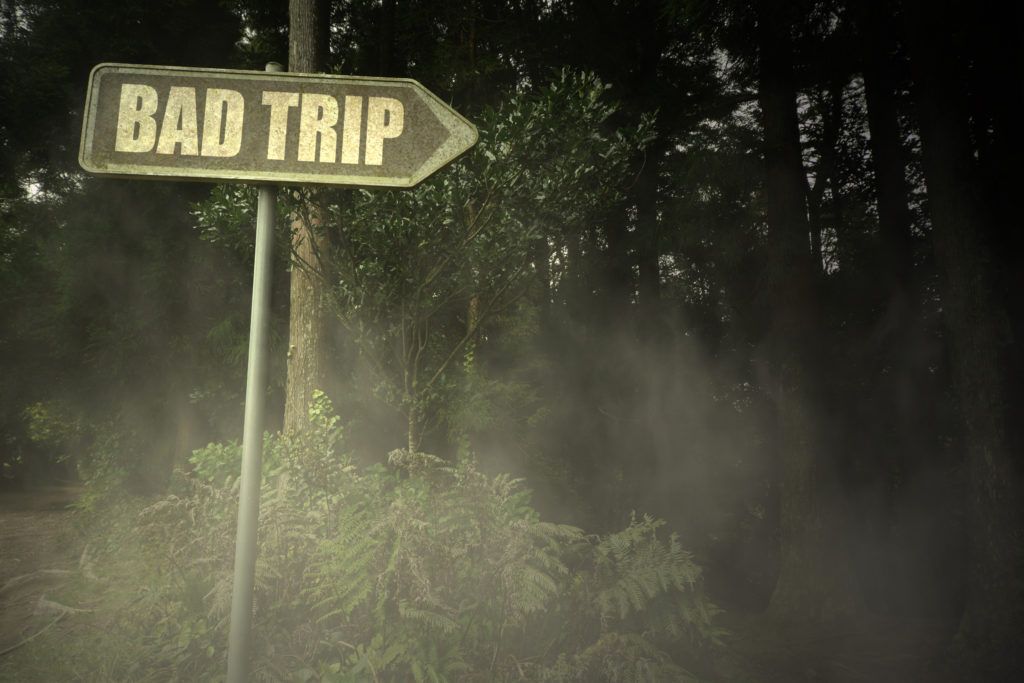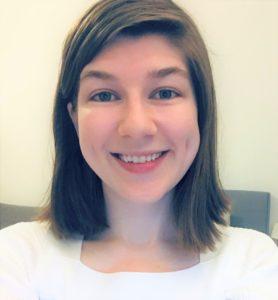
“That sounds pretty scary. What are the chances of it happening to me?”
Some version of this question might come from potential patients, participants in research studies, and others new to psychedelics. In preparation for taking a psychedelic drug, people (ideally) learn about its possible effects, including the undesirable ones. It’s a natural question: How likely am I to have a bad trip?
Until now, it was never quite possible to put a number on this. Undoubtedly, some people still won’t try. But for the first time, we now have scientific data giving us a few numbers to work with. And as a bonus, we also have some new data on the chances of LSD flashbacks and other adverse effects.
Anxiety and Bad Trips
Dr. Friederike Holze and colleagues collected data from multiple studies in which healthy participants took LSD.1 Doses ranged from 25 – 200 micrograms (µg) spread across 83 participants in total. Many participants took multiple doses, and most of them had at least one high dose of 100 or 200 µg. All participants took a placebo during the study as well, making for tidy comparisons. Most of them (75%) had never taken LSD before, and the rest had not done it more than three times.
Holze et al. found that 72% of participants reported an overall positive experience with LSD. Another 19% said their experience was neutral, neither particularly good nor particularly bad (or perhaps both). A final 8% reported that their overall experience was either negative or just disappointing.
The authors don’t differentiate between negative and disappointing, although these are two very different outcomes. However, two other data points shed some light on how many of these less-than-happy experiences might be classified as something like a “bad trip”. Firstly, 6% of participants reported strong anxiety during their experience, all of whom had taken at least 100 µg LSD. Strong anxiety is not equal to a bad trip, but it is often a component of one.2 Secondly, 2% of participants reported that they would never take LSD again under any circumstances, not even in a safe and supportive setting (the rest would consider doing it again under at least some circumstances). The authors don’t say this, but it is tempting to wonder whether these 2% had strong anxiety which evolved into a bad trip.
Importantly, over a quarter of participants who got a full hallucinatory dose (at least 100 µg) experienced some degree of anxiety. But this doesn’t automatically spell disaster: in a safe setting, anxiety is often transient and can even resolve into something positive or meaningful.3 Those who end up with overall negative experiences are likely people for whom this resolution did not happen.
Attempting to synthesize all of this into one data point, one could say that healthy participants taking up to 200 µg of LSD in a safe setting have a 2-8% chance of a negative experience, with higher doses being riskier. Needless to say, the chances might be higher with a bigger dose or without such a safe setting.
Side Effects
The fact that a few healthy subjects still had a negative experience in a safe environment might seem disconcerting. Certainly one can empathize with what they may have had to go through. But there is also good news: no long-term adverse effects were observed in any participant from this study, even the ones who had strong anxiety.1 After the acute effects of the 100 µg dose wore off, the most common side effects of LSD included feeling tired (54%), mentally dull (25%), or physically weak (14%), as well as difficulty concentrating (21%). Many people also reported headaches (43%). The frequencies of these side effects for the 200 µg dose were slightly higher. However, all side effects disappeared within a couple of days.
New Data on LSD Flashbacks
These researchers also set out to provide data on LSD “flashbacks”, whose existence and nature have long been topics of speculation. A flashback occurs when the psychedelic state returns in some form – stereotypically, though not necessarily, altered visual perception – after the trip has ended.4,5 Reports of hallucinogen persisting perception disorder (HPPD) have also been published, in which users of hallucinogens chronically experience flashbacks that can impair their quality of life.4,6
The possibility of flashbacks provokes two main concerns. Firstly, some might worry that an unexpected and intense flashback could impair someone in an unfortunate situation, for example, while driving. Secondly, there is the worry that flashbacks may not stop happening, eventually becoming HPPD. This study primarily addressed the second issue. In total, 7% of subjects reported having flashbacks more than 24 hours after LSD administration. Each of these people experienced between 1 and 3 flashback events. However, no one had a flashback later than 86 hours (about 3.5 days) after taking LSD, meaning that no subjects developed HPPD.1
As to the first concern, previous research on HPPD indicates that patients are usually aware that their flashbacks and symptoms are not real, and these do not reach the intensity of a full psychedelic trip.4 If this is true for HPPD, it is likely true of mild and transient flashbacks in people who do not develop HPPD. Other detailed case reports of flashbacks have described “benign” visual hallucinations which do not significantly impair people, although this does not mean that all flashbacks are completely harmless.7
Interestingly, there is some evidence that HPPD – as opposed to benign flashbacks – might be more than a perceptual disorder. It may be better classified as an anxiety disorder, not unlike PTSD. The trip preceding the onset of HPPD is often a “bad trip” with strong or extreme anxiety.4 Furthermore, HPPD can come with symptoms like dissociation and anxiety in addition to perceptual disturbances, and these symptoms need not have been present in the original psychedelic trip. Because prolonged, unresolved anxiety is rare in psychedelic research with healthy participants, the risk of HPPD in this setting is probably minuscule. (Not that HPPD is common even among those who have had bad trips – most of them end up fine.8)
All in all, these data suggest that flashbacks can indeed happen, but are relatively rare and short-lived after taking up to 200 µg of LSD. HPPD seems rarer still. More data from more people will be needed to solidify this information, but this study is an important contribution toward understanding the real risks of a phenomenon that has been subject to a great deal of speculation.
What About Outside the Lab?
Before we go, don’t forget: in-person psychedelic research with healthy people includes a very specific population of participants. Everyone is screened for mental and physical health problems. They are well-prepared for the effects of LSD, and they take it in a safe and supportive setting with trained researchers who know how to stop a bad trip before it really gets going. This study also only included people who had never or rarely used LSD.
But what about other people – people who aren’t as prepared, have a history of mental illness, or take psychedelics much more often or in very different settings? For now, it’s not guaranteed that the risk of bad trips and flashbacks is as low in other situations. Most would agree that a safe and supportive setting carries a lower risk of bad trips than a typical recreational setting.2 But no one knows how flashbacks arise, so it is not obvious that the setting affects them to the same degree.6
Previous research indicates that perceptual disturbances after LSD may be common in some groups of recreational users, especially those who use psychedelics relatively often.5 In one online study, 60% of participants reported visual distortions triggered by hallucinogen use, although the authors acknowledged that their sample may have been biased toward heavy drug users.5 This is in stark contrast to the relatively low prevalence of flashbacks (7%) reported in this study of well-screened, inexperienced users. Further research should investigate how characteristics of the setting and the user affect the risk of flashbacks and HPPD.
In any case, we now have some valuable new safety data on various doses of LSD in a safe and supportive setting. In healthy, mostly psychedelic-naive subjects taking up to 200 µg of LSD, the risk of a negative experience lies between 2 and 8%. The risk of transient flashbacks seems to be about 7%, and HPPD was not observed. Concrete data like this can help people – including clinicians and policymakers – make informed decisions about the risks and benefits of psychedelic drugs.

I used LSD and other psychedelics for many years from the age of 16. Out of hundreds of ‘trips’ I had perhaps four that could be considered bad. My worst experience was with 5-MEO-DMT. Fortunately, it only lasted for twenty minutes. That was also the only psychedelic that caused what I considered flashbacks. I had three very intense flashbacks within forty eight hours of taking the drug.
I took LSD for several years beginning in 1969. My first trip was bad, partly while watching the film, “Autumn Leaves.” No wild hallucinations, though, and I always took only the best 1000 mcg acid. In those days, I drove a taxi while under the influence of acid; no one was ever the wiser. Mesc was also nice, but too mellow for me. DMT added some occasional colorful auras, but nothing wild. Never had these so-called flashbacks. All psychedelics helped my mind over those years, mainly by making me aware. Good acid raises the BP, and I don’t want any… Read more »
I’m a typical researcher looking into various forms of government corruption with several temporary side work. Read Manchurian Candidate. Marks went into Frank Olson’s LSD disaster, in depth. Extreme bad trip. I’ve noted that phrase and did a search looking for bad trip stats. This site help immensely. thanks!